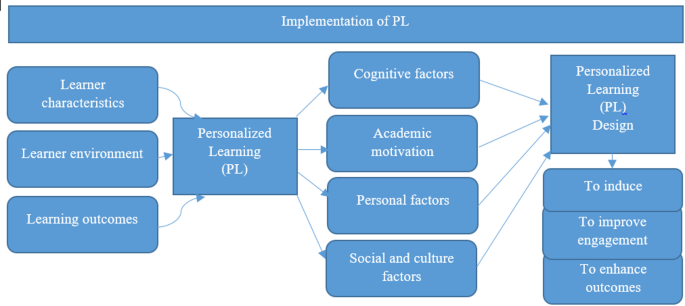Report on Self-Regulated Learning and its Implications for Sustainable Development Goal 4 (Quality Education)
1.0 Introduction
This report summarizes the findings of a study conducted at the University of Bergen, Norway, examining the relationship between motivation, learning strategies, and academic achievement among upper secondary school students. The research provides critical insights directly relevant to the United Nations’ Sustainable Development Goal 4 (SDG 4), which aims to ensure inclusive and equitable quality education and promote lifelong learning opportunities for all. By analyzing the components of self-regulated learning (SRL), the study highlights key factors that influence effective learning outcomes, a central tenet of SDG Target 4.1.
2.0 Study Methodology
The research was based on a self-regulated learning (SRL) framework and involved the following components:
- Participants: 401 upper secondary/senior high school students in Norway, with a mean age of 17.1 years.
- Assessment Tool: A 27-item short-form of the Motivated Strategies for Learning Questionnaire (MSLQ).
- Variables Measured:
- Motivational Beliefs: Intrinsic goal orientation, extrinsic goal orientation, and self-efficacy.
- Learning Strategies: Cognitive, metacognitive, and resource management strategies.
- Outcome Measure: Academic achievement, as indicated by Grade Point Average (GPA).
- Analysis: Confirmatory factor analysis was used to validate a nine-factor model, and ANOVAs were conducted to compare means across grade levels. Hierarchical regression analysis determined the predictive power of the variables on GPA.
3.0 Key Findings and Alignment with SDG 4 Targets
The study’s results reveal significant trends that impact the successful implementation of SDG 4.
3.1 Decline in Student Motivation and Effort
A significant decline was observed across grade levels in key areas essential for sustained academic engagement. This trend presents a direct challenge to achieving SDG Target 4.1 (ensure all youth complete quality secondary education leading to effective learning outcomes).
- Intrinsic Motivation: Students’ internal drive to learn diminished as they progressed through upper secondary school.
- Organization: The use of organizational learning strategies decreased over time.
- Effort Management: Students’ ability to persist and regulate effort also showed a significant decline, with the most substantial difference noted between first- and third-year students.
3.2 Predictors of Academic Achievement
The research identified the most influential factors on student GPA, providing a clear focus for interventions aimed at improving educational quality and equity.
- Self-Efficacy: This was the strongest single predictor of academic achievement (r = .51, β = .38), emphasizing that students’ belief in their capabilities is fundamental to success. Fostering self-efficacy is therefore critical for achieving equitable learning outcomes for all students as envisioned by SDG 4.
- Motivational Factors: Overall motivation explained 33% of the variance in GPA.
- Learning Strategies: Cognitive strategies added 4% to the variance, while metacognitive and resource management strategies added a further 5%. These skills are foundational for lifelong learning and align with SDG Target 4.4, which focuses on acquiring relevant skills for employment and decent work.
4.0 Recommendations for Advancing Sustainable Development Goals
Based on the findings, the following actions are recommended to support the achievement of SDG 4 and related goals, such as SDG 10 (Reduced Inequalities).
- Targeted Instructional Support: Educational systems should prioritize instructional interventions designed to enhance self-efficacy, metacognitive regulation, and effort management. Strengthening these core competencies is essential for improving learning outcomes (SDG Target 4.1) and equipping students with skills for the future (SDG Target 4.4).
- Address Motivational Decline: Proactive strategies must be implemented to counteract the decline in intrinsic motivation and effort management across grade levels. Sustaining student engagement is a prerequisite for a high-quality educational environment.
- Promote Self-Regulated Learning: Integrating SRL principles into curricula can empower students to become more effective, independent learners, thereby promoting the lifelong learning opportunities central to the mission of SDG 4.
5.0 Conclusion
This study underscores the critical importance of motivation and self-regulated learning strategies in achieving academic success. The findings highlight a concerning decline in student engagement and effort throughout upper secondary education, posing a significant obstacle to realizing the vision of SDG 4. By focusing educational policy and practice on bolstering student self-efficacy, metacognitive skills, and effort management, stakeholders can more effectively advance the goal of providing quality, equitable, and effective education for all learners. The study’s limitations, including its cross-sectional design and single-school sample, suggest a need for further longitudinal research in diverse settings.
Analysis of Sustainable Development Goals (SDGs) in the Article
1. Relevant Sustainable Development Goals (SDGs)
-
SDG 4: Quality Education
- The article directly addresses SDG 4, which aims to “ensure inclusive and equitable quality education and promote lifelong learning opportunities for all.” The research focuses on core components of quality education by examining the factors that influence academic achievement among upper secondary school students. It investigates student motivation, learning strategies, and self-efficacy, which are critical for effective learning and educational success. The study’s goal of identifying key targets for instructional support aligns with the broader objective of improving educational quality.
2. Specific SDG Targets
-
Target 4.1: By 2030, ensure that all girls and boys complete free, equitable and quality primary and secondary education leading to relevant and effective learning outcomes.
- This target is central to the article’s research. The study analyzes factors contributing to “effective learning outcomes,” which it measures through academic achievement (GPA). By identifying that self-efficacy is the strongest predictor of GPA and that intrinsic motivation and effort management decline across grades, the article highlights specific challenges and opportunities for ensuring the quality of upper secondary education is maintained and leads to positive results for students.
-
Target 4.4: By 2030, substantially increase the number of youth and adults who have relevant skills, including technical and vocational skills, for employment, decent jobs and entrepreneurship.
- The article connects to this target by focusing on the development of foundational skills that are highly relevant for future employment and higher education. Skills such as self-regulated learning (SRL), metacognitive regulation, organization, and effort management are transferable “soft skills” essential for success in any career. The study’s recommendation to provide instructional support for these areas directly contributes to equipping youth with the “relevant skills” needed for their future.
3. Indicators for Measuring Progress
-
Indicators for Target 4.1
- Academic Achievement (GPA): The article explicitly uses GPA as the primary indicator to measure “effective learning outcomes.” The finding that motivation and learning strategies explained a significant portion of GPA variance (33% and 9% respectively) demonstrates its use as a key performance indicator.
- Student Motivation Levels: The study measures intrinsic and extrinsic goal orientation. The finding of “significant grade-level declines in intrinsic goals” serves as a negative indicator, suggesting a drop in the quality of the learning experience as students progress through upper secondary school.
- Use of Learning Strategies: The research assesses cognitive, metacognitive, and resource management strategies. The observed decline in “organization, and effort management” is an indicator that students’ ability to learn effectively may be diminishing over time, posing a challenge to achieving quality learning outcomes.
-
Indicators for Target 4.4
- Self-Efficacy Scores: The article identifies self-efficacy as the “strongest predictor (β = .38)” of academic achievement. High self-efficacy can be considered an indicator of a student’s confidence and competence, which are crucial “relevant skills” for employment and lifelong learning.
- Proficiency in Self-Regulated Learning (SRL): The entire study is framed from an SRL perspective. The assessment of its components (motivation, strategies, self-efficacy) serves as an implied indicator for measuring students’ acquisition of the complex, transferable skills necessary for independent learning and future professional life.
Summary Table of SDGs, Targets, and Indicators
| SDGs | Targets | Indicators |
|---|---|---|
| SDG 4: Quality Education | Target 4.1: Ensure quality secondary education leading to effective learning outcomes. |
|
| Target 4.4: Increase the number of youth with relevant skills for employment. |
|
Source: frontiersin.org







